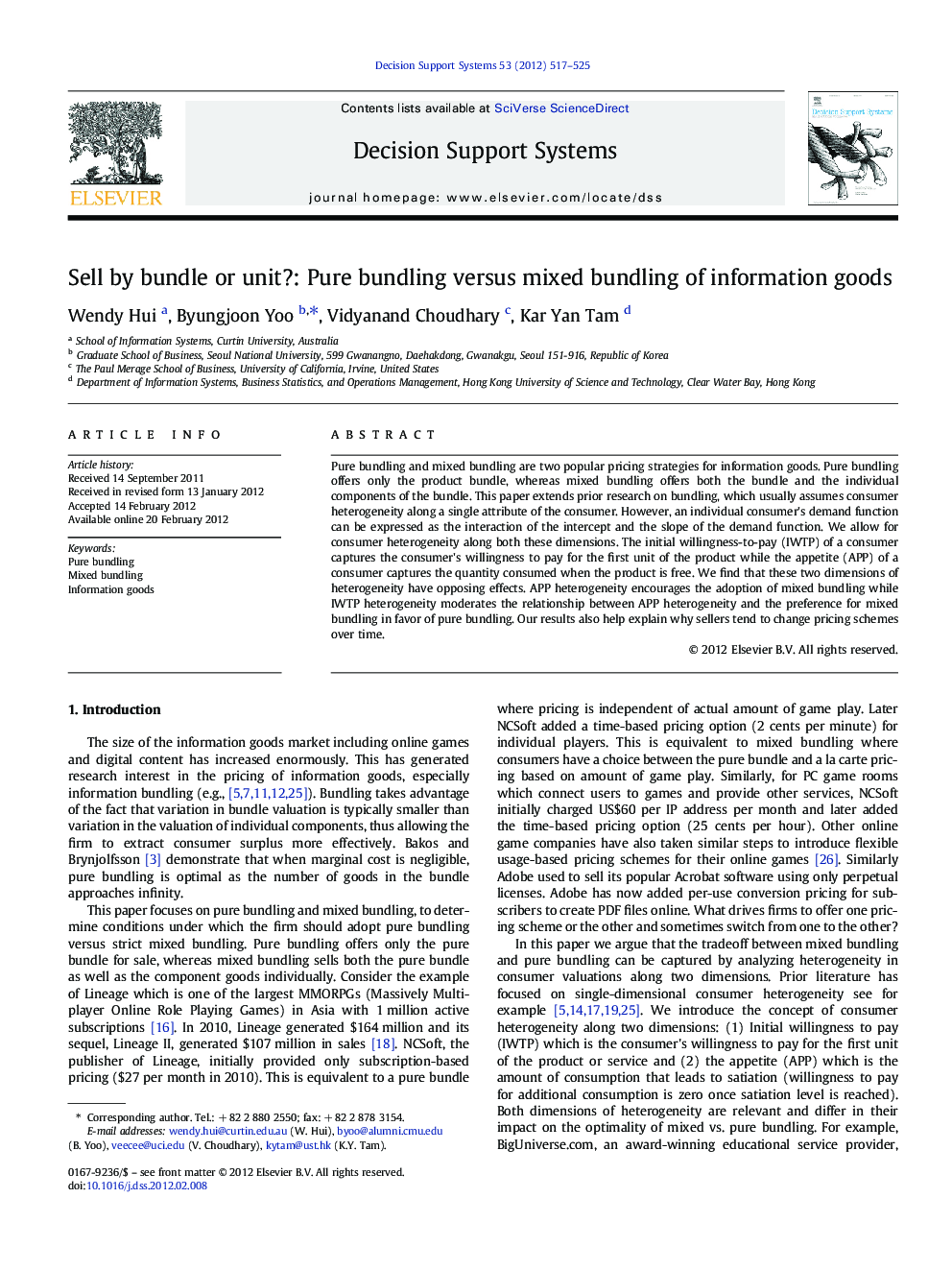| Article ID | Journal | Published Year | Pages | File Type |
|---|---|---|---|---|
| 554756 | Decision Support Systems | 2012 | 9 Pages |
Pure bundling and mixed bundling are two popular pricing strategies for information goods. Pure bundling offers only the product bundle, whereas mixed bundling offers both the bundle and the individual components of the bundle. This paper extends prior research on bundling, which usually assumes consumer heterogeneity along a single attribute of the consumer. However, an individual consumer's demand function can be expressed as the interaction of the intercept and the slope of the demand function. We allow for consumer heterogeneity along both these dimensions. The initial willingness-to-pay (IWTP) of a consumer captures the consumer's willingness to pay for the first unit of the product while the appetite (APP) of a consumer captures the quantity consumed when the product is free. We find that these two dimensions of heterogeneity have opposing effects. APP heterogeneity encourages the adoption of mixed bundling while IWTP heterogeneity moderates the relationship between APP heterogeneity and the preference for mixed bundling in favor of pure bundling. Our results also help explain why sellers tend to change pricing schemes over time.
► Two bundling strategies for information goods are compared in our analytical model. ► Single crossing property, which is a usual assumption for bundling, is relaxed. ► Two heterogeneities of consumers are analyzed and their differences are shown. ► The reason why sellers tend to change their pricing schemes over time is explained.
